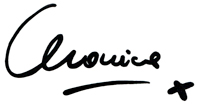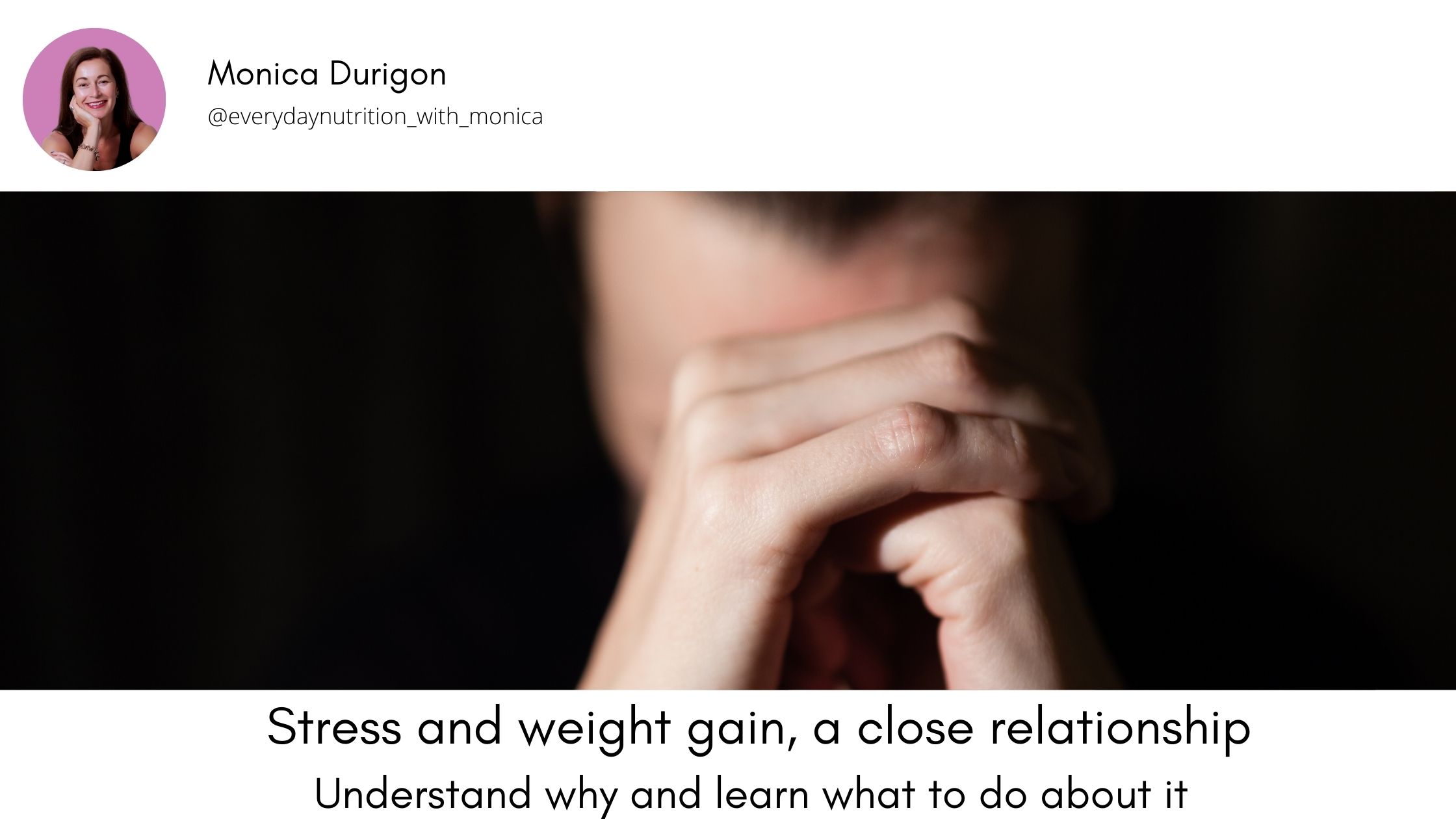Stress and weight gain, a close relationship. Understand why and learn what you can do about it.
Stress and weight gain are closely related for different reasons.
For a start, there is the coping mechanism that many adopt: seeking relief from stress using food. When we are stressed and overwhelmed we seek comfort in food and, suffice it to say that to get that immediate lift, we don’t reach for a salad!
When I get stressed, the first thing I think of to make me “feel better” is a nice slice of bread with nutella …or two.
And then, there is the unconscious and automatic chemical response to stress …anything that makes us feel stressed, fearful, overwhelmed will initiate an immediate response in our body which involves the release of adrenaline and cortisol ( amongst other hormones) to prime our body for “fighting or running away” (or, in some situation, “freezing”).
One of the many ways cortisol “prepares us” to face stress is by instructing the liver to break down the deposit of glycogen (a form of sugar storage in the liver) and release sugar into our bloodstream to be used to generate the energy to fight or flight. However, as in most cases, we are not running nor physically fighting a stressor, this excess sugar in circulation is not needed and instead of being helpful it will lead to blood sugar imbalances which in turn leave us tired and craving for more sugar … that nice slice of bread and nutella … again 😉
Stress and belly fat

Cortisol is also responsible for facilitating the deposition of fat in our central area… gifting us with that cushioning around our tummy which is immediately noticeable unless we spend our life living inside a baggy jumper!
And BTW, the reason why I keep on about fat around the belly, is not about vanity … in all honesty I should say “not purely “ about vanity because, I don’t know about you, but I certainly prefer having a flat stomach.
Reducing the fat around the middle is about health because abdominal fat adds on to the hormonal storm that we are facing in our 40s and beyond, because …guess what???… it secretes its own hormones and inflammatory molecules !!!
If you are like me and many of the women I have been working with in my programme, your life is full of activities that cause a stress response… demanding professional roles, driving in traffic, not sleeping enough, arguing with a partner or your children, worrying about eldery parents, tackling one task after another without any breaks … we certainly can’t avoid stress, but we can at least take steps to mitigate its effects.
That is why if your goals are to improve any aspect of your health or to lose weight, you absolutely must incorporate in your day some habits to build stress resilience and to rebalance your stress response back into a relax state ( the parasympathetic state of your nervous system)
Your anti-stress tool kit

Positive affirmations, your personal mantras.
An affirmation is a statement with an emotional charge, you can also think of it as a mantra. One way to calibrate our thoughts to have a calmer approach to a stressful situation is to create your own mantra and recite it during the day, have it visible in your environment by writing it down on post-it notes, using it as a screensaver, having it come up on your telephone as a reminder.
Mantras are powerful imprints on your subconscious mind. Some examples of affirmation I use are: I have an abundance of health and energy.
I receive and give joy. I inspire and get inspired. My body is strong and my mind is resilient.
To create your own positive affirmation make sure you use the present tense and that your statement is in the positive ( don’t use never or not ). You must associate with the positive feelings generated by the affirmation. It must be short and simple but packed with feelings. Imagine yourself experiencing what you are affirming and make it personal to you. Use your affirmation often during the day to anchor you to the positive feeling that it evokes.
Gratitude Journaling

With the birth of modern positive psychology, gratitude has taken more and more of a centre stage as one the values which are more closely related to feeling of happiness. Practicing gratitude does indeed make us feel more content by focusing and training our brain to look for and find the many positive gifts we receive everyday in our life.
Journaling is in general a brilliant tool to relax and transfer on paper the feelings we are experiencing and gratitude journaling will bring this practice to a whole new level. I recommend spending some time ( start with 5 minutes) each evening, whilst in bed, writing about three things that you are grateful for that day.
They don’t need to be huge things, there is a Hausa proverb that says “Give thanks for a little and you will find a lot”.
Robert Emmons is a leading scientist and expert on gratitude, he sees the practice of gratitude having two components:
#1 You make an affirmation of goodness. You affirm that there are good things in your world, gifts and benefits you have received. #2 You figure out where that goodness comes from and by doing this you recognize the outside sources of this goodness and this involves a humble dependence on others.
By practicing gratitude life doesn’t become perfect. Problems, burdens, and pain are still there but when we look at life as a whole, gratitude encourages us to identify some amount of goodness in our life.
Build some boundaries from your technology

Technology is a wonderful thing if we use it properly and it doesnt use us. We can easily get stuck in it and we are taken away from the things that are important for us and for our health. According to the findings of a survey by Code Computerlove, the average screen time in the UK is 3 hours and 23 minutes per day – a whopping 50 days every year. This rises significantly in the 16-24 age group, who spend four hours a day on their mobiles (60 days a year).
The constant exposure to news ( often portrait in a sensationalist and catastrophic style ) is stressful for many and another font of stress and dissatisfaction with ourself and our life comes from the constant comparison that we are naturally inclined to have with other people’s perfect life and body as they appear on the many social media channels.
Dr David and Austen Perlmutter, co-authors of the book “Brain Wash” propose a tool called TIME to use technology so that it can be a positive experience for us.
T=time restricted – set a window of time using a timer (ie 30 minutes )
I= intentional – have a purpose for your online experience, don’t drift away from it
M=mindful – be mindful about the way you are reacting to what you are consuming, think of how you are feeling
E= enriching – as per any other activity in our life, it should be enriching and not detracting from our life. Think if what you are consuming is improving your quality of life or was it just a waste of your precious time?
The more you use the TIME frame, the more you are aware of your choices and you will be more discerning on how you spend your time on line and avoid negative and stressful feelings.
Morning intention setting
This small but powerful ritual should be part of any morning routine.
Before you start your day, decide on how you want to be and feel during that particular day. If you know you have a particularly challenging day ahead, for example, and you suffer from anxiety, a helpful intention would be : “Today I want to feel calm and present”.
Write down your intention in your journal, use this in your meditation practice. Set up trigger moments throughout the day to remind you of your intention. Brendon Burchart, an American author and motivational speaker, uses the “door frame” trigger as an example. Everytime you walk from room to room, the door frame is a reminder of your intention for the day. You can also set up some notifications on your phone to be sent at regular intervals during the day to remind you of how you want to be and feel that day.
Green time over screen time

Spending time in nature acts as a balm for our busy brains. There is mounting evidence that walking in nature, even in an urban context, is linked to so many physiological and psychological benefits including lower stress and improving moods.
Swapping some of your usual screentime with some green time will be beneficial for reducing stress amongst a whole variety of other cognitive and physical benefits.
Unfortunately if you, like me are living in the UK, we are not blessed with the ideal weather condition to go for a walk and therefore is even more important that we do not waste those precious dry days by spending unnecessary time indoors but that we make greentime our default mode when the weather gods are smiling at us.
I recommend that you pick one or two of the tools I have discussed today and make them a regular occurrence in your day and when they are established behaviours, you can add some more.
If you have found this blog helpful, please leave your comments below and join my FREE FB COMMUNITY for women over 40 who want to thrive no matter their age and how busy they are. CLICK HERE to join.
With love, energy and care,






0 Comments